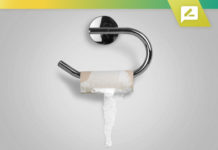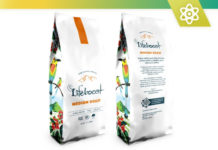In the hustle and bustle of modern life, finding moments of peace and relaxation can be challenging. Yoga, an ancient practice that combines physical postures, breathing techniques, and meditation, offers a refuge from stress and a pathway to tranquility. Whether you’re a seasoned yogi or a complete beginner, integrating certain yoga poses into your daily routine can significantly enhance your physical and mental well-being. This article explores various beginner yoga poses that can help you relax and unwind, bringing a sense of calm and rejuvenation to your daily life.
Yoga is a multifaceted practice with a plethora of benefits. Notably, it improves muscle tone, flexibility, and balance. More profoundly, yoga has the power to reduce stress, anxiety, and depression, promoting overall well-being and quality of life. According to research, consistent yoga practice helps individuals sleep better and enhances mental clarity. With these benefits in mind, let’s delve into some beginner-friendly yoga poses that can assist you in cultivating relaxation and peace.
Easy Pose (Sukhasana)
The Easy Pose, or Sukhasana, is a foundational seated posture in yoga that promotes relaxation and mindfulness. To perform Sukhasana, sit cross-legged on a yoga mat with your spine straight and your hands resting on your knees, palms up. Push the bones you’re sitting on down into the floor, creating a grounded feeling. Close your eyes and take deep, slow breaths. This pose not only stretches the back and improves flexibility, but also helps in relieving stress and calming the mind.
Gwen Lawrence, a yoga coach, suggests using the Easy Pose to assess and feel the external rotation of the legs. This simple yet effective pose is ideal for beginners and can be practiced anywhere, providing an immediate sense of peace and centeredness.
Cat-Cow Stretch (Marjaryasana-Bitilasana)
The Cat-Cow Stretch is a gentle, flowing movement that awakens the spine and alleviates back pain. Begin on your hands and knees, with your wrists directly under your shoulders and your knees under your hips. As you inhale, arch your back and drop your belly towards the floor, lifting your head and tailbone upwards – this is the Cow position. On your exhale, round your spine towards the ceiling, tucking your chin to your chest and drawing your navel towards your spine – this is the Cat position. Repeat this sequence several times, coordinating your movements with your breath.
Leah Cullis, a certified yoga teacher, highlights the Cat-Cow Stretch for its ability to open and increase the flexibility of the entire spine, neck, chest, and shoulders. It’s an excellent way to start or end your day, easing tension and promoting spinal health.
Downward Facing Dog (Adho Mukha Shwanasana)
One of the most recognized yoga poses, Downward Facing Dog, offers numerous benefits for the body and mind. Begin on all fours, then tuck your toes under and lift your hips up and back, forming an inverted V shape with your body. Keep your hands shoulder-width apart and your feet hip-width apart. Lengthen your spine and allow your head to hang between your arms.
Downward Facing Dog calms the nervous system, enhances overall flexibility, and decompresses the spine. It also tones the arms, sculpts the legs, and opens the shoulders. This pose is often held for several breaths, allowing for deep relaxation and increased strength.
Child’s Pose (Balasana)
Child’s Pose is a restorative posture that promotes relaxation and release. From Downward Facing Dog, bend your knees and lower your buttocks to your heels, bringing your chest towards the floor over your knees. Extend your arms forward or rest them alongside your body. Lower your forehead to the mat and breathe deeply.
Leah Cullis describes Child’s Pose as one of the most healing yoga poses, emphasizing its ability to connect the breath with the body and send calming energy through the muscles. This pose is perfect for taking a break during your yoga practice or whenever you feel overwhelmed and need to unwind.
Bridge Pose (Setu Bandha Sarvangasana)
The Bridge Pose is a gentle backbend that opens the chest and strengthens the back muscles. Lie on your back with your knees bent and feet hip-width apart, close to your buttocks. Press your feet into the mat and lift your hips towards the ceiling. Clasp your hands under your lower back and straighten your arms, pressing them into the mat for support.
Bridge Pose not only enhances spinal flexibility and relieves back pain, but it also stimulates the thyroid gland and helps regulate metabolism. This pose is beneficial for reducing stress and improving mood by opening the heart center and encouraging deep breathing.
Cobbler’s Pose (Baddha Konasana)
Cobbler’s Pose, also known as Baddha Konasana, is excellent for opening the hips and promoting relaxation. Sit with your legs extended in front of you, then bend your knees and bring the soles of your feet together, allowing your knees to fall open to the sides. Hold your feet with your hands and sit up tall, lengthening your spine. For a deeper stretch, you can gently press your knees towards the floor or lean forward from the hips.
This pose stretches the inner thighs and groins and can help relieve tension in the lower back. Cobbler’s Pose is especially beneficial for those who spend long hours sitting, as it counteracts tightness in the hip area and promotes relaxation.
Chair Pose (Utkatasana)
While the Chair Pose, or Utkatasana, might seem challenging, it offers significant benefits for building strength and stability in the lower body. Stand with your feet together and your arms at your sides. As you inhale, raise your arms overhead, keeping them parallel or bringing your palms to touch. As you exhale, bend your knees and lower your hips as if you’re sitting back into an imaginary chair. Draw your shoulders away from your ears and engage your core.
Chair Pose strengthens the thighs, calves, and back muscles, while also improving balance and focus. Holding this pose encourages you to ground yourself and breathe deeply, fostering a sense of stability and calm.
Locust Pose (Salabhasana)
Locust Pose is a gentle backbend that strengthens the back muscles and improves posture. Lie on your stomach with your arms alongside your body, palms facing down. As you inhale, lift your chest, arms, and legs off the floor, keeping your neck in line with your spine. Engage your core and try to lift higher with each breath.
This pose builds strength in the back, glutes, and legs, and enhances flexibility in the spine. Practicing Locust Pose regularly can help alleviate back pain and improve your overall posture, making it easier to stand and sit tall throughout the day.
Tree Pose (Vrksasana)
Tree Pose is a balancing posture that fosters focus and stability. To start, stand tall with your feet together. Shift your weight onto your right foot and slowly lift your left foot, placing it on your inner thigh or calf (avoid the knee). Bring your hands to your heart in a prayer position or extend them overhead. Find a focal point to help maintain your balance and hold the pose for several breaths. Repeat on the other side.
Tree Pose strengthens the legs and core while enhancing concentration and mental clarity. It’s a wonderful pose for grounding yourself and finding inner calm.
Baby Pigeon Pose (Eka Pada Rajakapotasana)
Baby Pigeon Pose is a deep hip opener that releases tension and enhances flexibility. Starting on all fours, bring your right knee forward and place it behind your right wrist. Extend your left leg back, keeping your hips square. Slowly lower your upper body over your right leg and rest on your forearms or forehead.
This pose targets the hips, glutes, and lower back, providing a profound stretch and promoting relaxation. It’s particularly beneficial for releasing emotional tension stored in the hips and fostering a sense of openness and ease.
Legs-Up-The-Wall Pose (Viparita Karani)
Legs-Up-The-Wall Pose is a restorative inversion that calms the nervous system and promotes relaxation. Sit with one side of your body against a wall, then gently swing your legs up the wall as you lower your back to the floor. Adjust your position so that your hips are close to the wall and your legs are straight up. Rest your arms at your sides or place them on your belly.
This pose encourages blood flow to the upper body, reduces swelling in the legs, and alleviates lower back tension. It’s an excellent way to unwind at the end of the day and prepare your body for a restful night’s sleep.
Incorporating Pranayama
In addition to these poses, integrating pranayama, or yogic breathing techniques, into your practice can amplify the relaxing benefits of yoga. Deep belly breathing, for instance, involves inhaling deeply into your abdomen, which can help calm the mind and reduce stress. Another effective technique is alternate nostril breathing (Nadi Shodhana), which balances the left and right hemispheres of the brain and promotes mental clarity.
Focusing on your breath during yoga not only enhances the physical benefits of each pose but also grounds you in the present moment, fostering a sense of peace and serenity.
Tips for a Safe and Effective Yoga Practice
To ensure that your yoga practice is safe and rewarding, consider the following tips:
- Start Slowly: Begin with basic poses and gradually increase the difficulty. This allows your body to adjust and guards against injury.
- Listen to Your Body: Pay attention to how your body feels during each pose. If you experience any pain, gently ease out of the position.
- Create a Comfortable Space: Find a quiet, clutter-free area for your practice. A dedicated space can enhance your focus and overall yoga experience.
- Use Proper Equipment: A yoga mat is essential for grip and comfort. Yoga blocks or straps can support challenging poses.
- Stay Hydrated: Drink water before and after your yoga session to keep your body well-hydrated.
- Warm Up Properly: Begin with gentle stretches or a warm-up sequence to prepare your body for more intense poses.
- Focus on Your Breath: Maintain steady, deep breaths throughout your practice to maximize the benefits of each pose.
- Practice Regularly: Even a short daily session can lead to significant improvements in flexibility, strength, and mental well-being.
- End with Relaxation: Conclude your yoga practice with a relaxation pose, like Savasana (Corpse Pose), to absorb the benefits of your session and relax your mind and body.
- Consult a Professional if Needed: If you have specific health conditions or feel unsure about a pose, consult a yoga instructor or healthcare provider for guidance.
Conclusion
Yoga is a powerful tool for relaxation and stress relief, accessible to everyone regardless of age or fitness level. By incorporating these beginner-friendly poses into your routine, you can experience the numerous physical and mental benefits of yoga. From enhancing flexibility and strength to promoting mental clarity and emotional well-being, yoga offers a holistic approach to health that can transform your life.
Integrating yoga into your daily routine doesn’t require a significant time commitment. Even a few minutes of mindful movement and deep breathing can bring about profound changes. As you practice, remember to listen to your body, stay present, and enjoy the journey towards a more relaxed and balanced you.
For additional resources on yoga poses and their benefits, visit WebMD and Everyday Health. These platforms offer comprehensive information and tips to enhance your yoga practice and overall well-being.













![Bowflex Max Total: 2024 Fitness Workout Exercise Machine [Review] Bowflex Max Total: 2020 Equipment Review For Complete Upper and Lower Body Workout](https://www.advancedliving.com/wp-content/uploads/2019/12/Bowflex-Max-Total-218x150.jpg)


